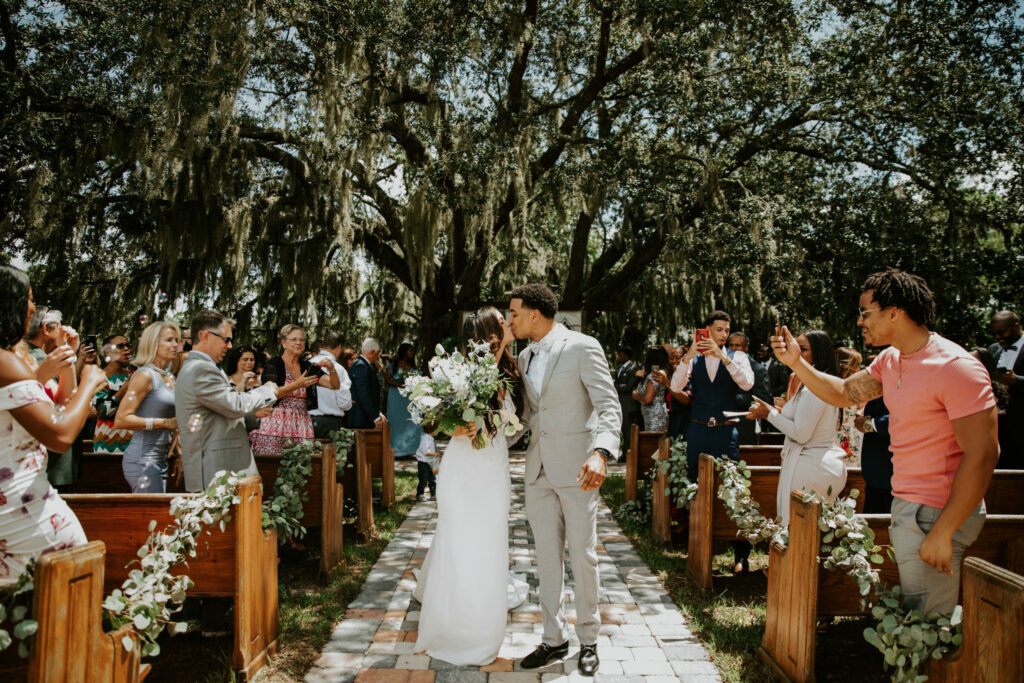Have you ever wondered what camera settings to use when taking pictures at a wedding ceremony? Since every wedding site is unique, every wedding you shoot will have a different background, lighting, and shadows. This might make it difficult to adjust your camera’s exposure, shutter speed, and other settings. We will discuss the ideal camera settings for wedding photography in this post.
The first thing you need to decide is what camera you’ll choose to work with. Our guide on which camera is best for wedding photography can help you there. Once you’ve chosen the best camera for video your needs, learning how to adjust its settings for different environments is easier.
You are undoubtedly well aware of the fact that your camera is only a tool if you shoot weddings. Beautiful images are the result of your camera-handling abilities. When photographing weddings, it’s crucial to understand how to set, modify, and control your camera settings.
Let’s look at some common camera settings for wedding photos right now!
Manual Settings
While utilising your camera’s Automatic Mode to capture a wedding is simple, the images won’t be ideal. You must use manual mode while taking pictures if you want to get some very stunning pictures. Professional photographers may individually adjust each camera setting by using Manual Mode.
Aperture Priority mode and Shutter Priority mode are two possibilities for Manual Mode on your camera. There is also a totally manual mode available.
Shutter Priority Mode
The shutter speed you choose is given priority in shutter priority mode, as the name indicates. In other words, your camera will automatically change its aperture to meet the shutter speed you’ve instructed it to maintain.
When photographing weddings, you should take the amount of motion in the scene into account when choosing the shutter speed.
For instance, you might use a slow shutter speed while taking staged pictures of the wedding party before the ceremony. The folks in the image will be posed; they won’t be moving around while it’s being taken or dancing or anything else.
A lengthy shutter speed of 1/60th of a second or even quicker is ideal for posed photographs. Just be careful not to choose a shutter speed less than 1/60th of a second, since this may cause motion blur from your hands pushing the shutter button to appear in your images.
On the other side, you want to significantly speed up your shutter speed at the reception. It will be quick enough to use a shutter speed of 1/500th of a second or faster. With such a quick shutter speed, all the joyful movement will be frozen in time. This include singing, laughing, and other happy activities.
Aperture Priority Mode
You may choose a specific aperture for your shot while using the aperture priority mode. The shutter speed is then chosen by your camera to produce a picture that is correctly exposed.
Aperture requirements for wedding couple portrait photography range from f/1.4 to f/2.8. You can think about utilising a bigger aperture setting when photographing the wedding location and taking wide images of the attendees.
It’s vital to remember that shooting in Aperture Priority Mode can be more challenging during weddings since shutter speed is so crucial for capturing rapid motions like dancing.
Your camera will slow down the shutter speed if you use a narrow aperture in low light conditions. By slowing down the shutter, more light may enter the camera’s sensor since the shutter is left open for longer.
If you’re shooting without a tripod, the unintentional consequence can be that your image has motion blur and camera shaking.
Fully Manual Mode
Because Manual Mode is preferable than Shutter Priority Mode and Aperture Priority Mode for wedding photography, both have their drawbacks. You may control every camera setting in manual mode, so nothing is left to chance.
You must comprehend how your camera’s settings relate to one another in order to shoot in Manual Mode. It also necessitates a certain amount of familiarity with your camera and other wedding photography gear.
Before shooting your first wedding in Manual Mode, take the time to study the fundamentals of shutter speed, aperture, and ISO if you’re unsure of their relationships or how to alter each camera parameter. Spend some time practising, and your first wedding picture shoot in Manual Mode will go without a hitch.
Depth of Field
The aperture of your camera has an impact on more than just the final image’s exposure. It also establishes the depth of your field.
The distance between the closest and farthest things in your shot that the camera is able to capture in sharp focus is referred to as depth of field.
The image below, for instance, demonstrates a narrow depth of field. That’s because just the dancing pair and other nearby things are sharply in focus. The rest of the background is fuzzy.
You may employ depth of field, especially in wedding photography, to produce images that highlight the happy couple on their special day. Shots like the one above are frequently included by a wedding photographer in a catalogue for the customers’ wedding book.
Use of the Flash
You may utilise the basic flash that is integrated into every camera to add more light to your wedding shots. Although it may seem simple, using your camera’s flash isn’t always as simple as it appears to be. To shoot amazing wedding photographs, you must understand how to utilise flash effectively.
We also advise you to read this article about flash-free wedding photography lighting.
You should consider your photography lighting both before and during a project. How can it be optimised for the setting and space? There are alternatives to flash when it isn’t the best solution.
Also read: latestdiscuss
Your Right Lens Choice
Contrary to popular belief, selecting the proper camera settings and the appropriate lens are equally crucial. Spend some time selecting the best lens companion for your camera since they work together to produce your perfect image.



